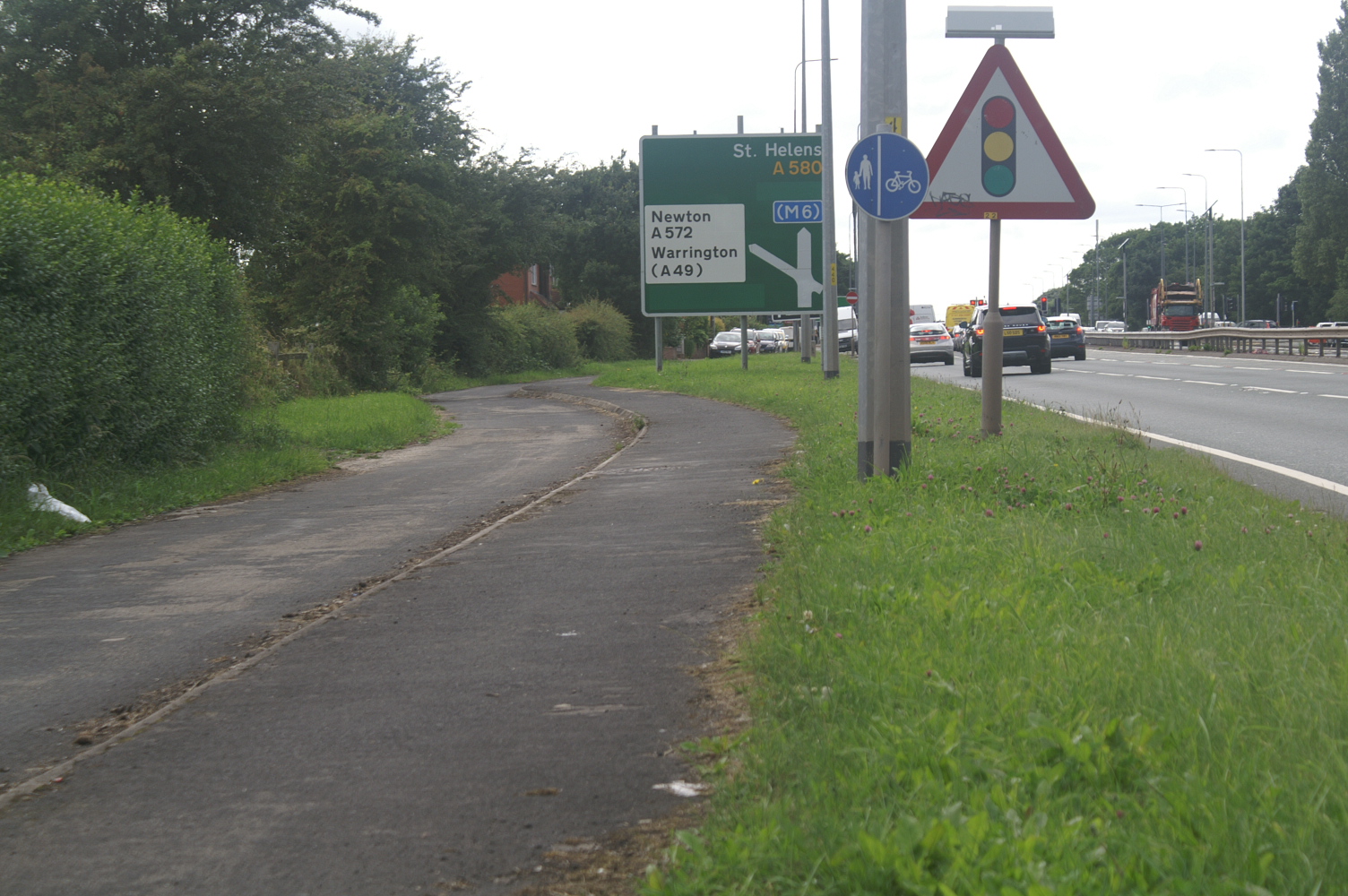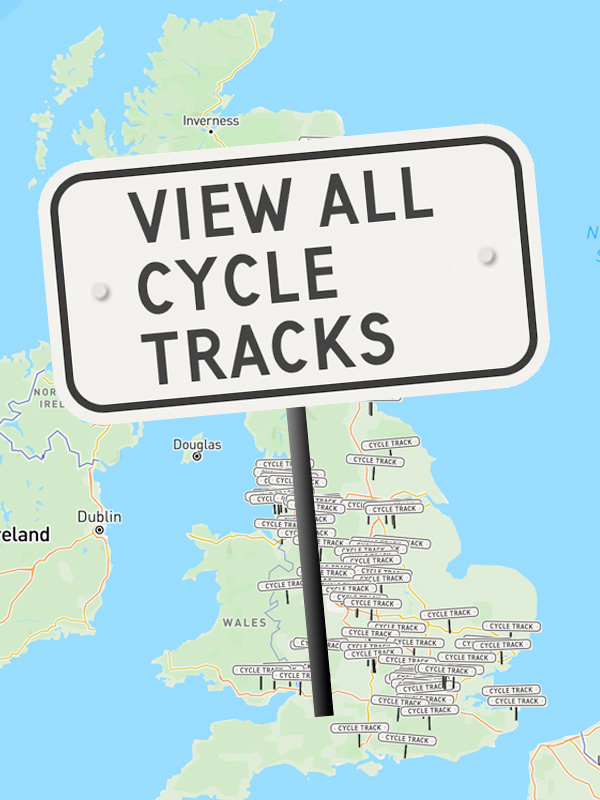
Cycle track and footway on the East Lancs Road. Credit: John Parkin.
The A580 East Lancashire Road between Manchester and Liverpool — Britain’s first purpose-built intercity highway — was opened by King George V on 18 July 1934. It was built by unskilled labour, partly as unemployment relief. A footway was part of the build. Five or so years later the footway was joined by at least two or more stretches of cycle track.
“On the Liverpool-East Lancashire trunk road the construction of dual cycle-tracks nine feet wide for a length of 2½ miles from its junction with the Manchester-Preston-Carlisle trunk road will be put in hand shortly,” the transport minister Leslie Burgin told parliament in May 1938.
He added: “I propose in due course to extend these tracks westwards for the whole length of the road.”
That didn’t happen, and the anecdotes I’ve been told of 25-mile cycle journeys on this long road are probably memories of footway rides. (Few people will have ever walked long distances beside the East Lancs Road.)
It has not been confirmed that the three stretches above are period cycle tracks but cycle tracks were definitely built on the road, as attested by a cyclist writing to the Manchester Evening News to complain about them in 1949.
An OS air photo from 1944 to 1950 shows what would be a quite odd footway and cycle track combination on the north side of the southern carriageway of Walton Hall Drive stretch of the road. However, this is a tram line run for the Liverpool Corporation Tramways and is now buried by grass.
When it was built in 1934 the East Lancs Road did not have dual carriageways. According to the road’s opening brochure it had “one central carriageway, 40 feet wide … flanked by a verge 4 feet wide and a footway 6 feet wide on each side.”
The carriageway “[comprised] two coats of steam rolled asphalt to the British standard specification, and it is interesting to record that one of our oldest Colonies, Trinidad, has supplied a percentage of the bitumen used in the preparation of this material.”






